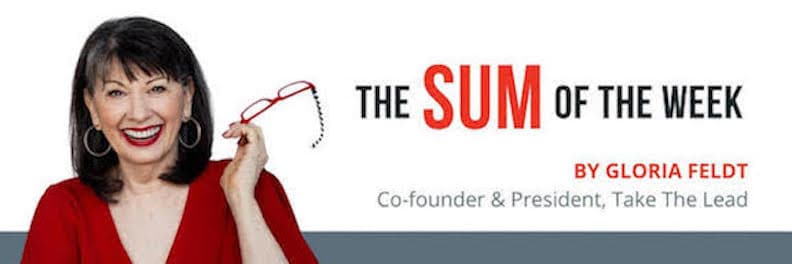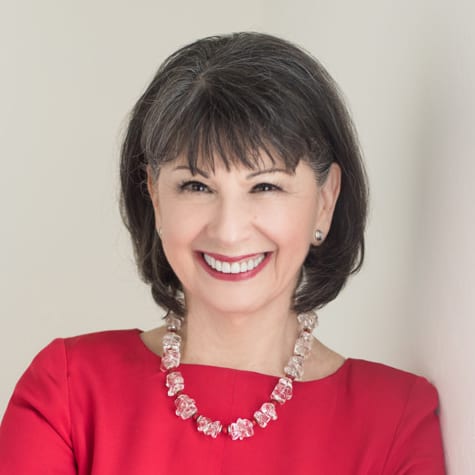Do or DEI: Why Most Diversity Programs Fail and How To Succeed Instead

Issue 165 — April 5, 2021
“And in a world where everyone strives to act, think and look the same — being different is truly something to be proud of. That’s why I’m very proud to be autistic.” – Greta Thunberg.
I love that quote because I love the richness of human diversity. I’ve been an outlier myself for most of my life, I hated it in my youth. But I came to value the experience of being “othered.” It gave me empathy for all groups that are marginalized or discriminated against. More importantly, it made me an activist for social justice because I realized that even as we value our uniqueness, we, meaning the human race, will succeed or fail together in today’s interconnected world.
In preparation for Take The Lead’s April 15, 2021, Power Up Summit: Igniting the Intentional Leader for DEI, I’ve been delving into the problem perplexing so many CEOs and professionals in the Diversity, Equity, and Inclusion or Human Resources space: why after so many fine words and so much time and money expended on DEI programs, is it still so stubbornly hard to move the dial?

Study after study concluded that traditional diversity programs are not only largely ineffective, but in some instances have the opposite effect of increasing implicit and explicit biases. These problems are exacerbated by the coronavirus pandemic; majority of job losses have been to women, causing some experts to predict that women’s advancement has been set back by a decade or more.
Reasons cited for this are manifold, but they basically boil down to these three:
- Lack of commitment from the top of the organization is a sure-fire way to fail at increasing diversity. Even if a CEO vocalizes commitment but believes the organization is a meritocracy, it’s quite likely that leadership will continue to look like the CEO; it’s human nature to believe those with attributes we share are the most meritorious unless there is willingness to challenge one’s assumptions. And despite the unassailable business case that more gender and diversity of all kinds results in more profits, it’s not likely that anyone in the currently largely white and male power structure is going to relinquish their power voluntarily. As a result, BCG managing director Matt Krentz found:
“Half of all diverse employees stated that they see bias as part of their day-to-day work experience. Half said that they don’t believe their companies have the right mechanisms in place to ensure that major decisions (such as who receives promotions and stretch assignments) are free from bias. By contrast, white heterosexual males, who tend to dominate the leadership ranks, were 13 percentage points more likely to say that the day-to-day experience and major decisions are free of bias.”
2. Focusing on the problem instead of courageously having the conversations that can lead to solutions. It’s easy to discuss the data about the lack of diversity and to default to shame and blame. That’s depressing, energy sucking. And it simply reinforces a culture where Black, Indigenous, and other people of color and all women don’t see that they will be treated fairly as they work to achieve their career intentions.
3. Failure to change the culture to one where all feel they are valued. Let’s face it: it’s hard to change a culture while you are living in it. I’m not saying it’s easy. But the primary reason so many women bail out of the corporate world at mid-career has much more to do with discomfort with the culture than with the prevailing assumptions that they leave for childbearing reasons. Similarly, white supremacist culture is often not even recognized as a deterrent, and you can’t change what you don’t see needs changing.
Why our DEI summit is intentionally different — and why valuing differences provides solutions: We promise new research, practical tools you can use right away, and powerful networking. Here are just a few examples, addressing the three problems above. You can register here.

Brielle Valle will release original research on the impact of COVID on women in the workplace and participants will workshop solutions. Valle says:
“The primary research conducted about the disproportionate effects of COVID-19 on women [will] address how corporations must do better in their policy creation in order to support equality. [T]he revised structure will act as a driver for inclusion-centered thinking.”

Felicia Davis, a summit speaker and Take The Lead Leadership Ambassador, who with Dr. Nancy O’Reilly will have one of those courageous conversations on racial healing, describes the solution it offers to the pervasive focus on the problem:
“We are tackling DEI from the racial healing perspective and using psychology-based tools so that women and men show up to work with the capacity to have powerful and sometime polarizing conversations that matter. We do this in order to challenge, transform and confront systemic racism in a way that creates more equitable and inclusive cultures.”

Dean of Social Sciences at Arizona State University Pardis Mahdavi will tackle the larger culture change problem by enlarging the conversation to include justice with DEI:
“I have created a framework called JEDI: Justice, Equity, Diversity and Inclusion. By placing Justice first, we ensure an action-oriented approach to systemic change for which EVERYONE is responsible. JEDI offers an approach that is top to bottom and bottom up and invites actual structural changes to create an ecosystem of success for all members of an organization. As such, this is a roadmap for change that can be adapted to any and all organizations.”
What sets you apart is actually what gets you ahead, as Greta Thunberg observed. Diversity is a plus, equity a necessity, and inclusion is the process to achieve the desired culture.
Why do so many #diversityequityinclusion programs not work to achieve the goals for which they are intended? Because they don’t do the things you’ll learn at #ThePowerUp #Summit2021 for #DEI. Register now & sponsor your team.

GLORIA FELDT is the New York Times bestselling author of several books including No Excuses: 9 Ways Women Can Change How We Think About Power, a sought-after speaker and frequent contributor to major news outlets, and the Co-Founder and President of Take The Lead. People has called her “the voice of experience,” and among the many honors she has been given, Vanity Fair called her one of America’s “Top 200 Women Legends, Leaders, and Trailblazers,” and Glamour chose her as a “Woman of the Year.”
As co-founder and president of Take The Lead, a leading women’s leadership nonprofit, her mission is to achieve gender parity by 2025 through innovative training programs, workshops, a groundbreaking 50 Women Can Change The World immersive, online courses, a free weekly newsletter, and events including a monthly Virtual Happy Hour program and a Take The Lead Day symposium that reached over 400,000 women globally in 2017.
